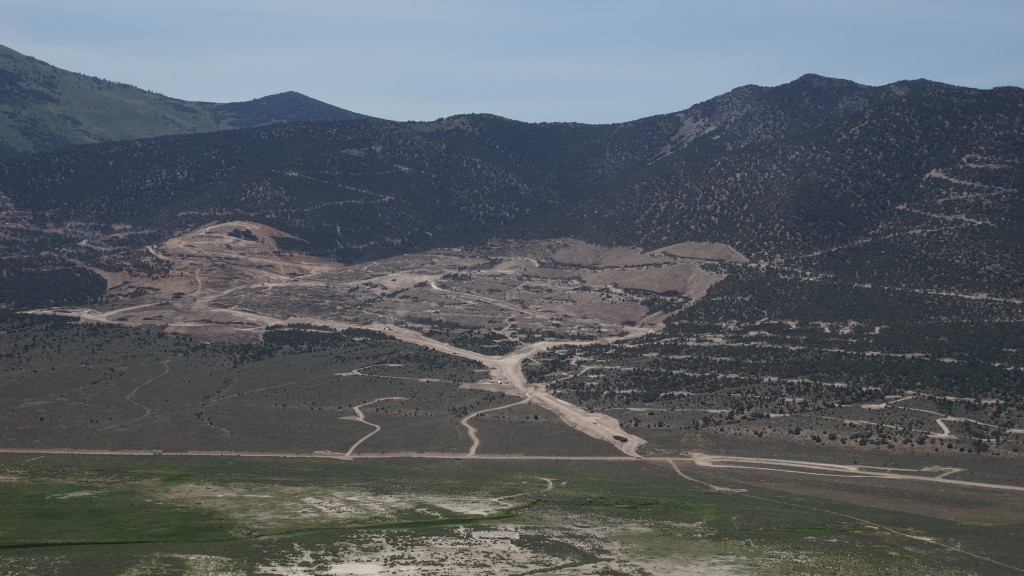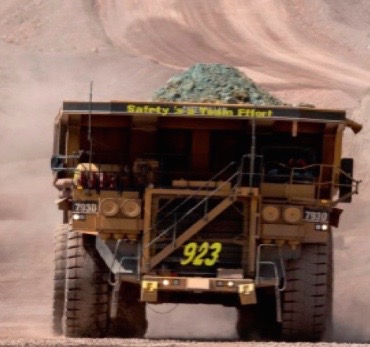Newmont is going full steam ahead in the construction of the Long Canyon Mine but so far the influx of mine workers has been a trickle in Wendover and Wells.
“There is really no reason to be concerned,” said Senior External Relations Representative Pamela Smith. “We told local officials this project would be completed in stages we informed potential workers just when the jobs we advertised for would start. Everything is going to plan.”

In fact things are are actually better than two months ago when the price of gold got dangerously close to the $1,000 an ounce mark a five year low.
Since then gold has rebounded to well over $1,100 an ounce mark and is expected to go higher perhaps much higher in the next few years.
 Two weeks after the temporary dip, the company issued a new call for workers, truckers, at Long Canyon and the company also announced a quarterly dividend of $0.025 per share of common stock, payable on September 24 to shareholders of record at the close of business on September 10.
Two weeks after the temporary dip, the company issued a new call for workers, truckers, at Long Canyon and the company also announced a quarterly dividend of $0.025 per share of common stock, payable on September 24 to shareholders of record at the close of business on September 10.
The company says the average London Bullion Market Association p.m. gold price during the second quarter fell below the company’s gold-price-linked dividend policy threshold of $1,200 per ounce. Still, the board authorized the company to maintain the dividend for the third quarter based on “strong year-to-date operating and financial performance,” Newmont says in its announcement. The company is the first major North American gold producer scheduled to report second-quarter earnings, with the report due out sometime after the market closes this week.
Estimated to need 500 workers during construction and 250 miners once operations are ready, the Long Canyon mine could add at least 1,000 people to the area and that may be just the tip of a gold boom in eastern Elko County.
“We think this could have as much potential as the Carlin Trend,” Geologist Moira Smith said four years previous. “It is truly remarkable.”
 In addition to having ‘smoking hot’ ore, the area is a stones throw from Interstate 80, has no endangered species living anywhere near it and does not have any significant archaeological sites located on it. Despite the contention of the Goshutes, ancient Native Americans also apparently ignored Long Canyon.
In addition to having ‘smoking hot’ ore, the area is a stones throw from Interstate 80, has no endangered species living anywhere near it and does not have any significant archaeological sites located on it. Despite the contention of the Goshutes, ancient Native Americans also apparently ignored Long Canyon.
This August a federal judge ruled against the Goshutes motion for a temporary order to stop work on the mine suggesting that the tribes request to halt construction altogether will also be denied.
“The Wells Band of the Western Shoshone believes we can have preservation and economic development at the same time,” said Gracie Begay tribal chairwoman. “We have been meeting with the BLM, Newmont and the Ibapah Goshutes for months now. We had no idea that they would do this now.”
While there have been finds of ancient hearths, tools and poetry shards there have been no discoveries of petroglyphs, permanent or even semi-permanent hunting or agricultural sites in the area.
 The mine has the potential to radically alter the economy and the lives of eastern Nevada, residents of Wendover and Wells. The two cities who once looked with jealously at the boom in Elko and Carlin could soon have a mine to call their own.
The mine has the potential to radically alter the economy and the lives of eastern Nevada, residents of Wendover and Wells. The two cities who once looked with jealously at the boom in Elko and Carlin could soon have a mine to call their own.
Long Canyon Mine project cleared its final hurdle to begin construction with Bureau of Land Management issuing its Record of Decision this April. The decision allows the mining operator to construct and operate a new heap leach gold mine that would consist of one open pit, one heap leach pad, a waste rock storage facility, a tailings storage facility, a natural gas pipeline from the existing Ruby Pipeline, on-site power generation plant and other ancillary facilities. The associated disturbance would be approximately 1, 707 acres of public land, including 480 acres of split estate lands of federal surface and private subsurface.
 According to a Newmont press release the first phase of development consists of an open pit mine and heap leach operation with expected gold production of between 100,000 and 150,000 ounces per year over an eight year mine life at an estimated all-in sustaining cost of between $500 and $600 per ounce. At current gold prices, the project is expected to generate around $100 million annually, beginning in 2017.
According to a Newmont press release the first phase of development consists of an open pit mine and heap leach operation with expected gold production of between 100,000 and 150,000 ounces per year over an eight year mine life at an estimated all-in sustaining cost of between $500 and $600 per ounce. At current gold prices, the project is expected to generate around $100 million annually, beginning in 2017.

